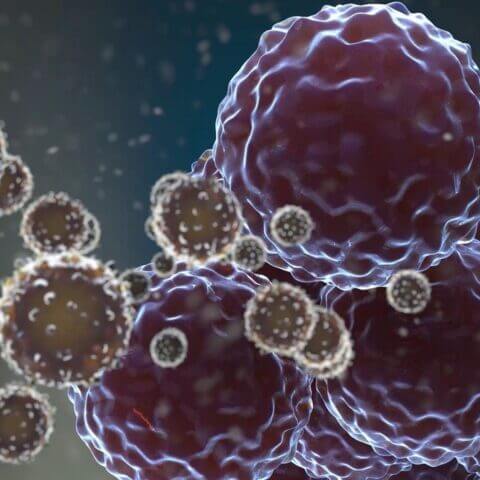Skin contains essential stem cell populations and other cell types that are critical for renewing and maintaining its structural integrity and function.1 Of the many types of skin stem cells that have been identified, epidermal stem cells — primarily keratinocyte stem cells — are recognized to play the key role in tissue repair and skin regeneration.2 Most epidermal stem cells reside in the basal layer of the epidermis. These cells have been characterized as rare, infrequently dividing, and capable of generating the short-lived, rapidly dividing cells involved in regenerating the epidermis and repairing skin injury.2
In this article, we discuss the obstacles of developing cell therapies as well as the current status of cell-based therapies in dermatology.
Challenges in developing dermatology cell products
As with all cellular therapy products, the hurdles in developing cell products for skin repair include:2
- Ability to ensure that the stem cells differentiate into the desired cell phenotype(s)
- Identification of biomarkers that confirm cellular purity
- Persistence of the cells in vivo
- Understanding the potential impact of adjuvants and biomaterials on the cellular microenvironment and the immune response
- Selection of an appropriate method for cell delivery or grafting
- Assessment of the benefit-to-risk ratio compared to standard of care
Another wrinkle that is often overlooked in the development of cell therapies for dermatologic conditions is ethnic differences in skin composition, which may affect response to treatment.
Clinical research and applications of cell-based therapies in dermatology
Burns and wound healing. Approximately 1 million people sustain thermal injuries, or burns, each year in the U.S.3 Since the 1980s, cultured human keratinocyte clones have been used to treat patients with severe burns. There are currently several keratinocyte-based skin repair products on the market or in clinical trials, including autografts and suspensions:
- Cultured epithelial autograft (CEA) sheets may also be used alone or in combination with skin autografts for wound closure. When used in combination, they may enhance the take of an autograft and improve both skin texture and scar quality.4 5 6
- Cultured keratinocyte suspensions, when sprayed directly into a wound or used in combination with skin grafting, have been shown to accelerate epidermal wound healing.7
Rare diseases. Epidermal stem cells and genetically modified keratinocytes have also been studied in subtypes of epidermolysis bullosa (EB): 8 9 10
- Researchers have successfully cultured autologous epidermal stems cells and modified them with a viral vector carrying a functional version of LAMB3, the mutated gene in junctional EB. These modified stem cells have then been grown into sheets of skin.11
- One clinical-stage biopharmaceutical company is studying the use of a retroviral vector to insert COLA7A1, the gene mutated in recessive dystrophic EB (RDEB), into keratinocytes. These genetically modified keratinocytes are then cultured into skin grafts.12
- Another company is studying the use of a lentiviral vector to modify autologous fibroblasts, which can then be injected intradermally to treat RDEB.12
Other research and applications. More recently, somatic stem cells have received increased attention due to their potential to cross lineage boundaries under specific environmental conditions. Recent studies have shown that mesenchymal stem cells may be a promising therapeutic modality for wound healing, atopic dermatitis, and other inflammatory skin diseases, as well as autoimmune skin diseases such as graft versus host disease with skin manifestations and systemic lupus erythematosus.13 14
Future considerations
Cell-based therapy is becoming an increasingly viable alternative or combination treatment for the management of burns and other wounds, but its clinical applications remain limited. Scientific and technical issues remain. For example, more clinical evidence is needed and the time required to generate CEAs may make it unsuitable for acute treatment of serious burn injuries. To realize the full potential of cell therapies in dermatology, we will need more well-designed trials to define efficacy and safety as well as technical advances that enable timely intervention.
Read more:
The State of Gene Therapy in Dermatology
Gene Therapy in Dermatology: Transfer Techniques and Delivery Systems
1 Li Z, Maitz P. Cell therapy for severe burn wound healing. Burns & Trauma. 2018;6:13.
2 Chu GY, et al. Stem cell therapy on skin: Mechanisms, recent advances and drug reviewing issues. J Food Drug Anal. 2018;26:14-20.
3 Clark RA, Ghosh K, Tonnesen MG. Tissue engineering for cutaneous wounds. J Invest Dermatol. 2007;127:1018-1029.
4 Yim H, et al. Clinical study of cultured epithelial autografts in liquid suspension in severe burn patients. Burns. 2011;37(6):1067–71.
5 Soejima K, Nozaki M, Kobayashi M, Negishi N. Studies of surface microarchitecture using a hand-held video microscope in cases of cultured epithelial autografts. Ann Plast Surg. 1998;41(3):270–4.
6 Lee H. Outcomes of sprayed cultured epithelial autografts for full-thickness wounds: a single-centre experience. Burns. 2012;38(6):931–6.
7 Svensjö T, Yao F, Pomahac B, Eriksson E. Autologous keratinocyte suspensions accelerate epidermal wound healing in pigs. J Surg Res. 2001;99(2):211–21.
8 Uitto J, et al. Progress in epidermolysis bullosa research: toward treatment and cure. J Invest Dermatol. 2010;130:1778-1784.
9 Mavilio F, et al. Correction of junctional epidermolysis bullosa by transplantation of genetically modified epidermal stem cells. Nat Med 2006;12:1397-1402.
10 Hirsch T, et al. Regeneration of the entire human epidermis using transgenic stem cells. Nature. 2017;552:327-332.
11 Arney K.. Change the genes to fix the skin. Nature; December 12, 2018. Available at https://www.nature.com/articles/d41586-018-07640-2. Accessed April 6, 2020.
12 Armstrong M. Gene therapies go skin deep to tackle epidermolysis bullosa, Evaluate; March 11, 2019. Available at https://www.evaluate.com/vantage/articles/analysis/spotlight/gene-therapies-go-skin-deep-tackle-epidermolysis-bullosa. Accessed April 6, 2020.
13 Shin TH, Kim HS, Choi SW, Kang KS. Mesenchymal Stem Cell Therapy for Inflammatory Skin Diseases: Clinical Potential and Mode of Action. Int J Mol Sci. 2017;18(2).
14 Prodinger C, Reichelt J, Bauer JW, Laimer M. Current and future perspectives of stem cell therapy in dermatology. Ann Dermatol. 2017;29(6):667-687.




